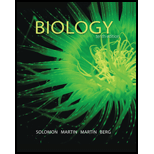
Concept explainers
Test Your Understanding
Know and Comprehend
1. Seed plants lack which of the following structure(s)? (a) ovules surrounded by integuments (b) microspores and megaspores (c) vascular tissues (d) a large, nutritionally independent sporophyte (e) a large, nutritionally independent gametophyte
Introduction: Seed is a part of plant, which contains an embryo that will give rise to a new plant, stores food material in the form of “endosperm” for the growth of embryo, and seed coat for the protection of seed.
Answer to Problem 1TYU
Correct answer: Seed plants does not possess a “large, nutritionally independent gametophytic” structure. Hence, the correct answer is option (e).
Explanation of Solution
Reason for the correct answer:
Seeds are present inside the ovary, which is known as female gametophyte. The function of female gametophyte is to provide nutrition to a number of ovules that requires a large amount of nutrition. Gametophytes are microscopic in size and have endosperm in it as a reserve food material for the development of plant when the seed is set for the process of germination. Thus, if a nutritionally independent gametophyte is present then the development of the ovules will not be possible, which will result in the deterioration of ovules.
Option (e) is given as “a large, nutritionally independent gametophyte”.
A seed plant does not have a nutritionally independent gametophyte because the gametophyte depends upon the sporophyte for the nutrition. Hence, the correct answer is option (e).
Reasons for the incorrect answers:
Option (a) is given as “ovules surrounded by integuments”.
Seed plants produce ovules which are surrounded by the integuments. Later on, those integuments will result in the formation of seed coat and serve as a protective covering of the seed. Hence, option (a) is incorrect.
Option (b) is given as “microspores and megaspores”.
Seed plants produce both kinds of spores such as microspores (male gamete) and megaspores (female gamete). The condition of producing both types of spores is known as heterospory. Hence, option (b) is incorrect.
Option (c) is given as “vascular tissues”.
Plant body uses vascular tissues for the transport of food materials and water for the proper growth of plant body. Thus, vascular tissues are present in seed plants. Hence, option (c) is incorrect.
Option (d) is given as “a large, nutritionally independent sporophyte”.
Most of the seed plants have a large, nutritionally independent sporophyte. Hence, option (d) is incorrect.
Hence, options (a), (b), (c), and (d) are incorrect.
Nutritionally independent gametophyte is not present in seed plants.
Want to see more full solutions like this?
Chapter 28 Solutions
BIOLOGY-W/ACCESS (LOOSELEAF) >CUSTOM<
- Test Your Understanding Apply and Analyze 13. You are given a plant that you have never seen before (see figure). Is it a gymnosperm or angiosperm? A monocot or eudicot? What are the features that helped you make these determinations?arrow_forwardTest Your Understanding Know and Comprehend 7. A simple pistil consists of a single (a) calyx (b) carpel (c) ovule (d) filament (e) petalarrow_forwardDiscuss Concepts Compare the size, anatomical complexity, and degree of independence of a Douglas fir female gametophyte and a dogwood female gametophyte. Which one is the most protected from the external environment? Which trend(s) in plant evolution does your work on this question bring to mind?arrow_forward
- Test Your Understanding Evaluate and Synthesize 18. EVOLUTION LINK Where would you place the progymnosperms on Figure 28-2? Explain your reasoning. Figure 28-2 Gymnosperm and angiosperm evolution This cladogram shows a current hypothesis of phylogenetic relationships among living seed plants, based on structural evidence, molecular comparisons, and fossils. Relationships among extant gymnosperm clades and angiosperms remain controversial. The arrangement of the phyla shown here may change as future analyses help clarify relationships.arrow_forwardTest Your Understanding Know and Comprehend 5. Motile sperm cells are found as vestiges in these two gymnosperm groups: (a) monocots, eudicots (b) gnetophytes, conifers (c) gnetophytes, flowering plants (d) cycads, conifers (e) cycads, ginkgoarrow_forwardKnow and Comprehend 12. Which of the following statements about ferns is not true? (a) ferns have motile sperm cells that swim through water to the egg-containing archegonium (b) ferns are vascular plants (c) ferns are the most economically important group of bryophytes (d) the fern sporophyte consists of a rhizome, roots, and fronds (e) the diversity of ferns is greatest in the tropicsarrow_forward
- Test Your Understanding Know and Comprehend 3. The immature male gametophytes of pine are called (a) ovules (b) stamens (c) seed cones (d) pollen grains (e) polar nucleiarrow_forwardCONNECT How do the life cycles of seedless plants (see Chapter 27) and seed plants differ? In what fundamental ways are they alike?arrow_forwardTest Your Understanding Know and Comprehend 2. Conifers, cycads. ginkgo, and gnetophytes are collectively called (a) club mosses (b) gymnosperms (c) angiosperms (d) eudicots (e) seedless vascular plantsarrow_forward
- Evaluate and Synthesize 14. EVOLUTION LINK How may the following trends in plant evolution be adaptive to living on land? (a) dependence on water for fertilization no need for water as a transport medium (b) homospory heterosporyarrow_forwardTest Your Understanding Evaluate and Synthesize 17. EVOLUTION LINK Contrast the algae, mosses, ferns, gymnosperms, and angiosperms with respect to their dependence on water as a transport medium for reproductive cells. Suggest a hypothesis to explain how the differences might be adaptive to living on land.arrow_forwardKnow and Comprehend 11. These plants have hollow, jointed stems that are impregnated with silica. (a) mosses (b) club mosses (c) horsetails (d) whisk ferns (e) hornwortsarrow_forward
 Biology (MindTap Course List)BiologyISBN:9781337392938Author:Eldra Solomon, Charles Martin, Diana W. Martin, Linda R. BergPublisher:Cengage Learning
Biology (MindTap Course List)BiologyISBN:9781337392938Author:Eldra Solomon, Charles Martin, Diana W. Martin, Linda R. BergPublisher:Cengage Learning Biology: The Dynamic Science (MindTap Course List)BiologyISBN:9781305389892Author:Peter J. Russell, Paul E. Hertz, Beverly McMillanPublisher:Cengage Learning
Biology: The Dynamic Science (MindTap Course List)BiologyISBN:9781305389892Author:Peter J. Russell, Paul E. Hertz, Beverly McMillanPublisher:Cengage Learning

